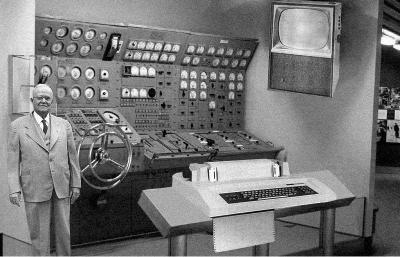I bought a used paperback copy of McLuhan’s first book, The Mechanical Bride. It is a non-linear book; a collection of ads and other clippings from magazines and newspapers, each with questions and commentary by McLuhan. McLuhan encourages us to jump to any section or exhibit as each view is a way into “the circulating point of view” of the book.
Ours is the first age in which many thousands of the best-trained individual minds have made it a full-time business to get inside the collective public mind. To get inside in order to manipulate, exploit, control is the object now. (p. v of Preface)
The book sets out to help the reader by analysing how print media works by returning to it and analyzing it like art or literature.
It was this amusement born of his rational detachment as a spectator of his own situation that gave him the thread which led him out of the Labyrinth. And it is in the same spirit that this book is offered as an amusement. (p. v of Preface)
The detached reader is amused by the manipulation and that is a way back, but back out of the Labyrinth to what?
Most of the exhibits in this book have been selected because of their typical and familiar quality. The represent a world of social myths or forms and speak a language we both know and do not know. (p. v of Preface)
McLuhan calls these ads, cartoons, news clips and so on, “folklore of industrial man” and quotes anthropologist C. B. Lewis to the effect that folklore is not made by the folk, but for them.
The ads he turns up are even more obvious in their manipulation today (or were they always obviously?) One ad for RCA radios is titled “Freedom to LISTEN- Freedom to LOOK” and goes on with rubbish about radio and television promoting freedom. One wonders if such ads lose any power once they look dated or did McLuhan just do a great job at readjusting our reading of such media?
Now that we have all been educated to understand media (thanks to McLuhan), Why are there still ads? Why are we still fooled?
Continue reading Used Mechanical Bride

